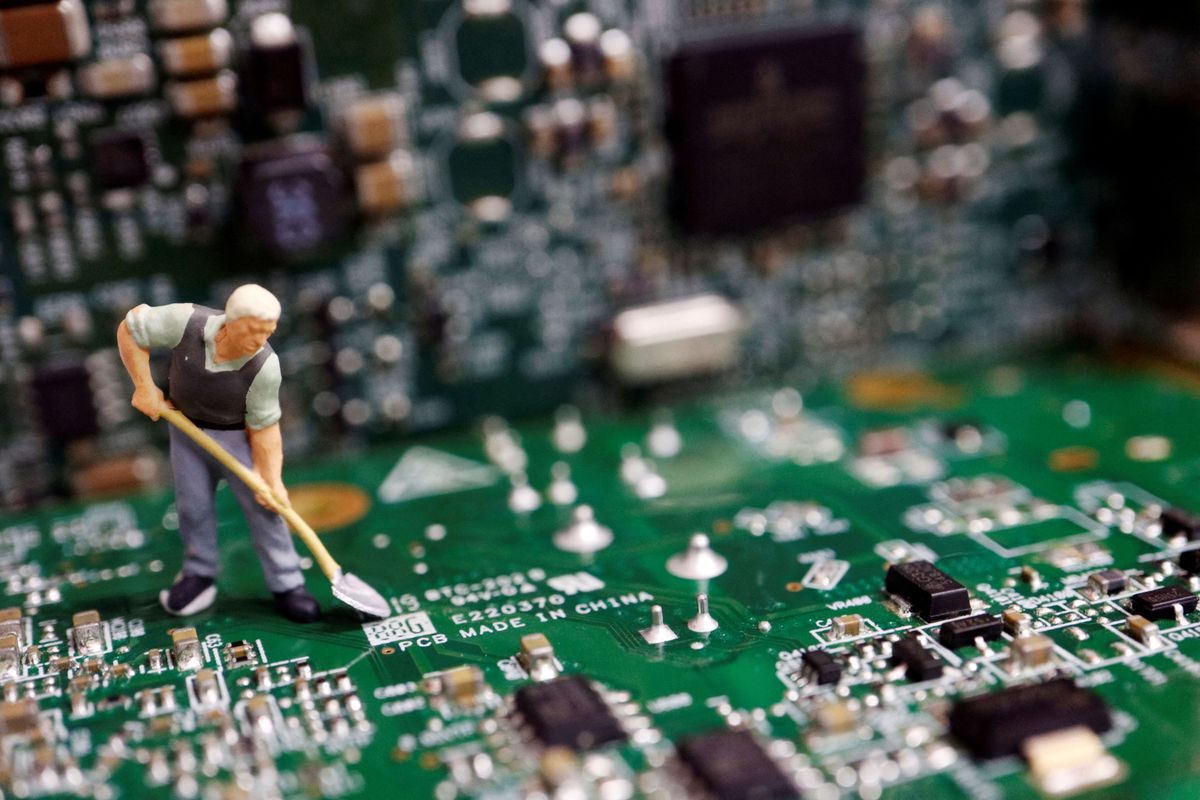China plans to boost its computer power to get ahead in the AI race
Technology competition between the US and China has been simmering for years now.

A few minutes every morning is all you need.
Stay up to date on the world's Headlines and Human Stories. It's fun, it's factual, it's fluff-free.
The backstory: Technology competition between the US and China has been simmering for years now. The US is considered one of the most tech-advanced countries in the world, with supercomputing power of 2,344 PetaFLOPS (PFLOPS) Rmax and 150 supercomputers (the most of any country in the world). FLOPS stands for floating point operations per second and measures a computer’s performance.
But as American tech has advanced over the past 20 years, so has China’s. The 21st-century has brought a tech boom in the nation as it quickly catches up to the US in what’s seen as a tech race between these two major world powers. China is now the world’s top tech manufacturer, and it has the third-highest computing power in the world (after the US and Japan).
More recently: The most advanced semiconductor chips, which are used to power artificial intelligence (AI), are mostly produced in the US or by American tools and machines in other countries. About a year ago, the US government set up export controls on US chips and chipmaking equipment for Chinese companies, pointing to worries about China using this kind of tech for its military. This policy has caused more strain in US-China relations, but China isn’t waving the white flag here.
In August, China’s Ministry of Industry and Information Technology (MIIT) said that the country had reached a computing power of 197 exaFLOPS (EFLOPS) this year, up from 180 in 2022. For some context, an EFLOP is equal to the computing power of two million average laptops.
The development: On Monday, Chinese authorities released info on the country’s new plan to boost its total computing power by over 50% by 2025. It’s pushing focus toward supercomputing and AI developments. The exact target at the moment is for China’s total computing power to hit 300 EFLOPS by 2025. The Chinese ministries say that this kind of power is needed to build on industries like finance and education. But supercomputing is also a way to power AI, which advanced semiconductors use to process tons of data at once.
Key comments:
"China has found that traditionally, every 1 yuan invested in computing power has driven 3-4 yuan of economic output," Akshara Bassi, senior research analyst at Counterpoint, told CNBC. "The investments echo China's plans to drive economic output through leadership in technology prowess and integrating AI with existing technologies and solutions across all industries and domains."
“Technological innovation has become the main battleground of the global playing field, and competition for tech dominance will grow unprecedentedly fierce,” Chinese President Xi Jinping said in 2021.
“In AI, especially on large language models, the US and the UK are currently in the lead,” American foreign policy expert Anja Manuel told Bloomberg recently. “While in certain narrower aspects of AI, like visual recognition and surveillance tech, the Chinese are doing just fine.”




Comments ()